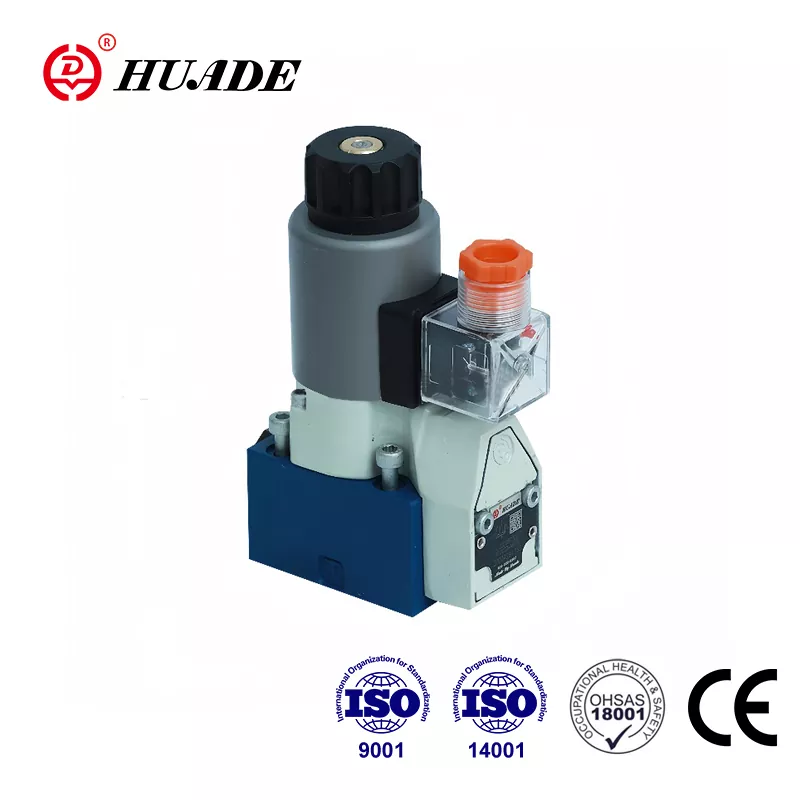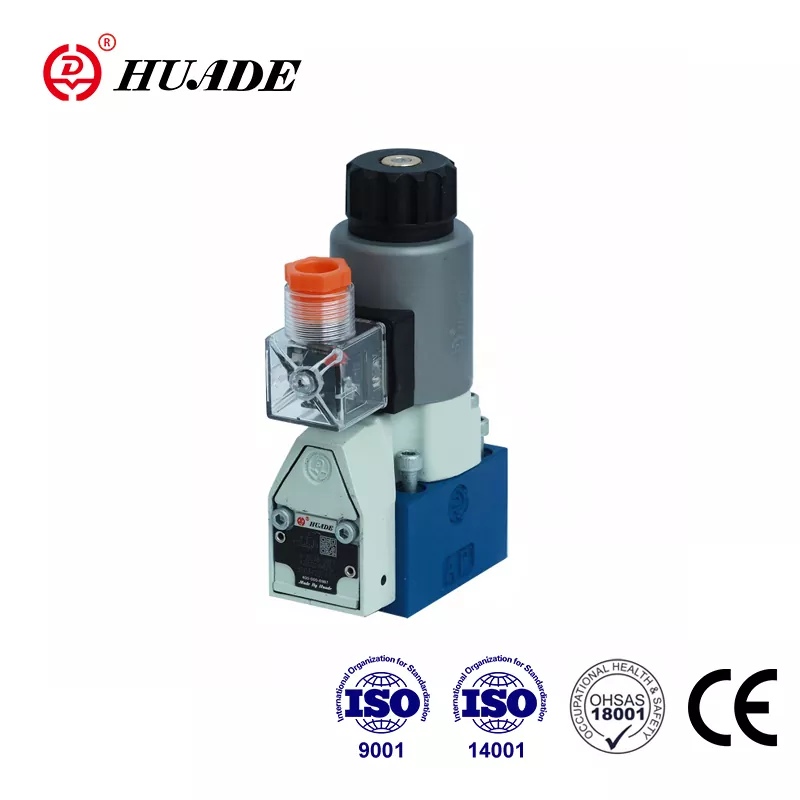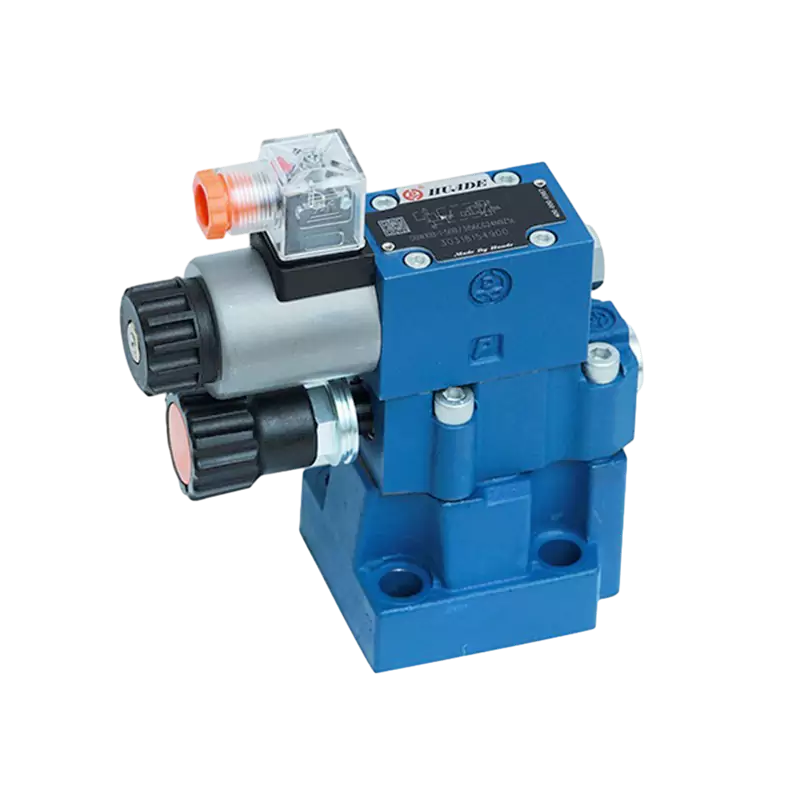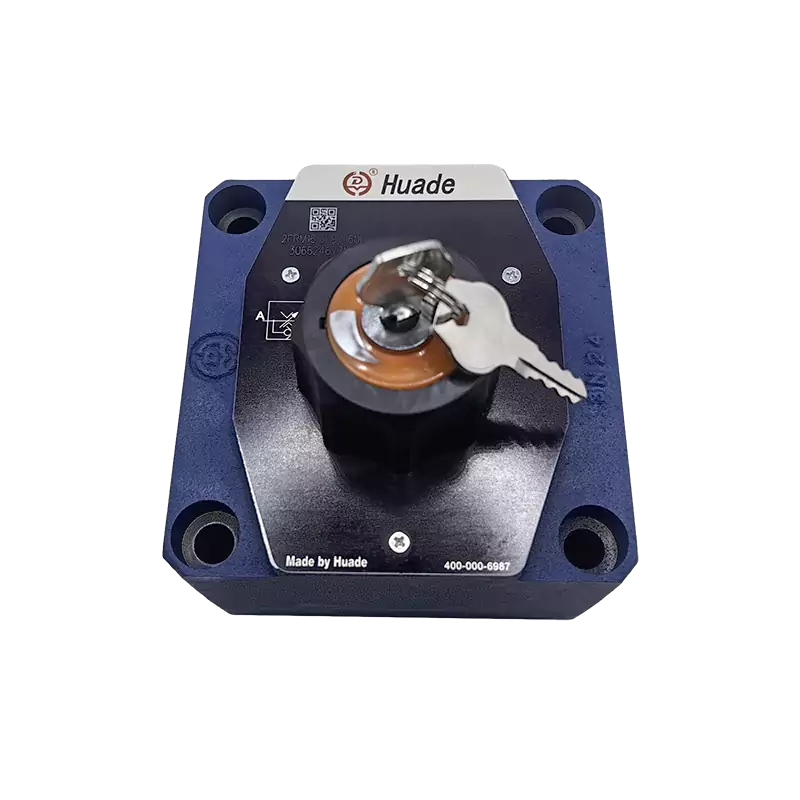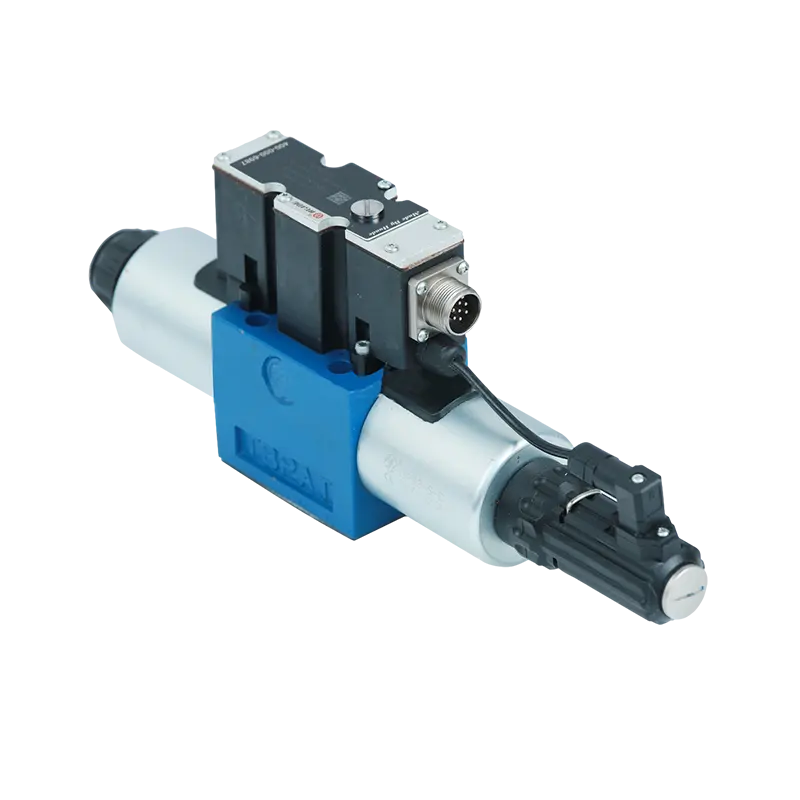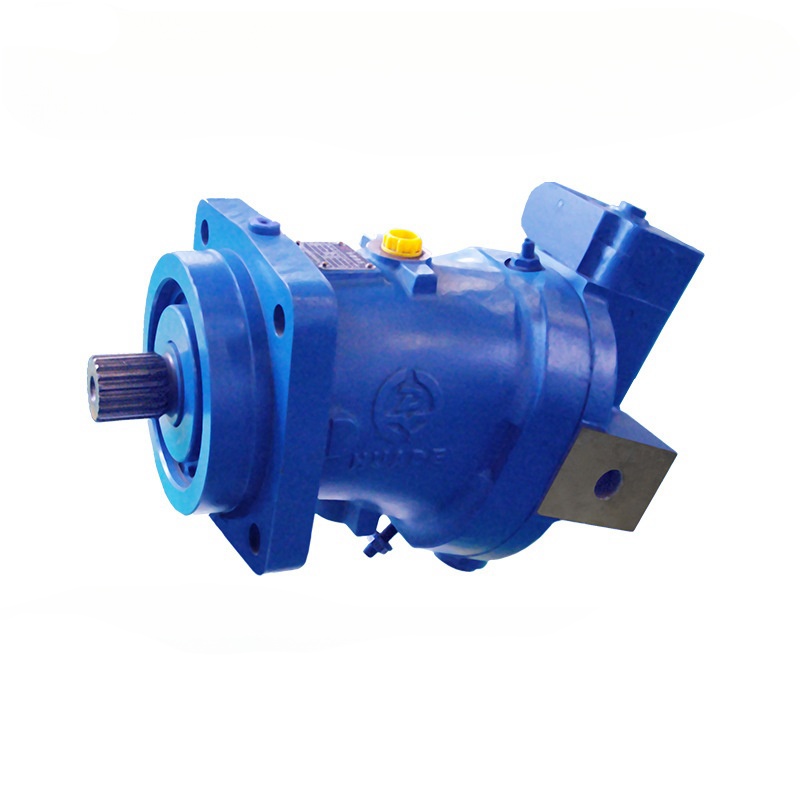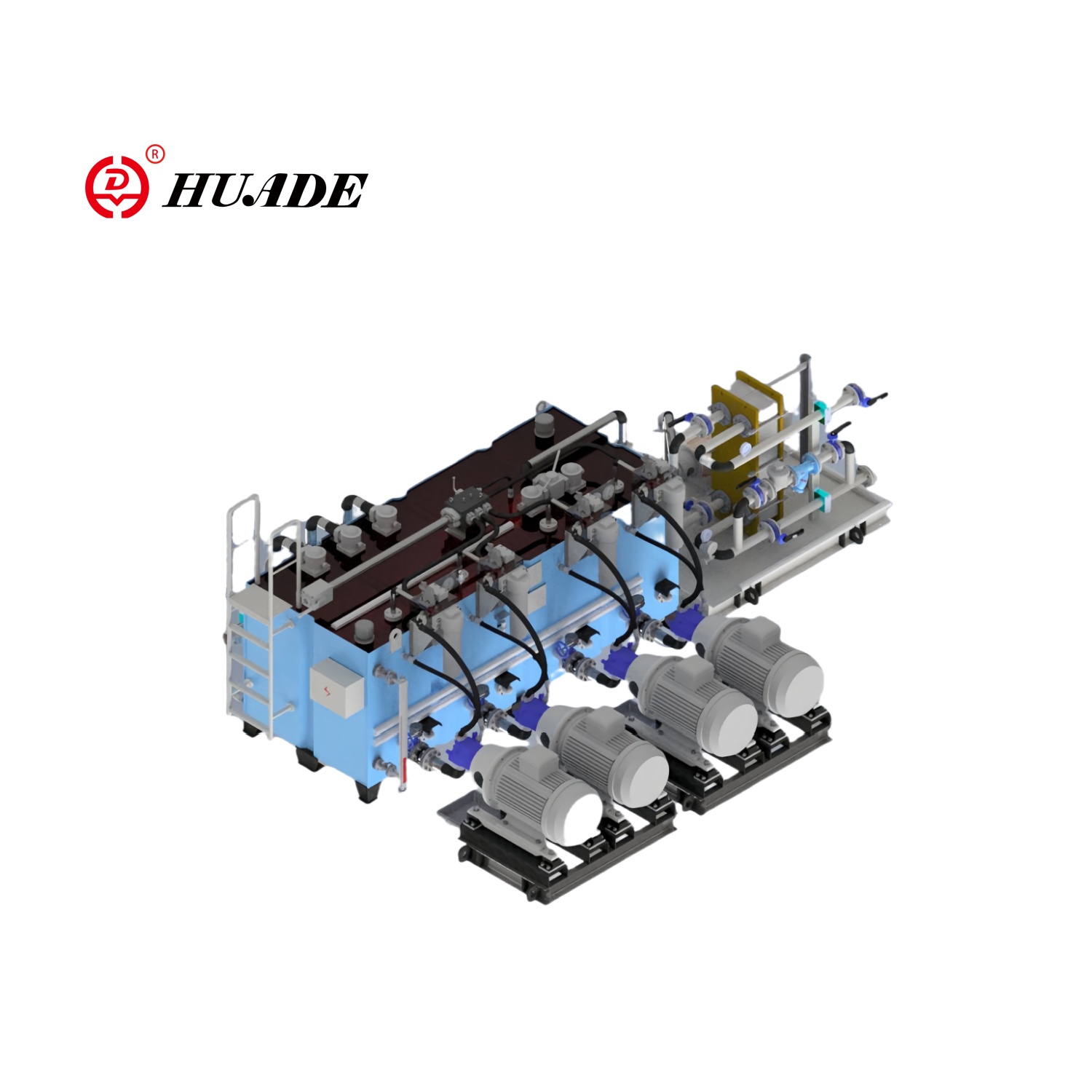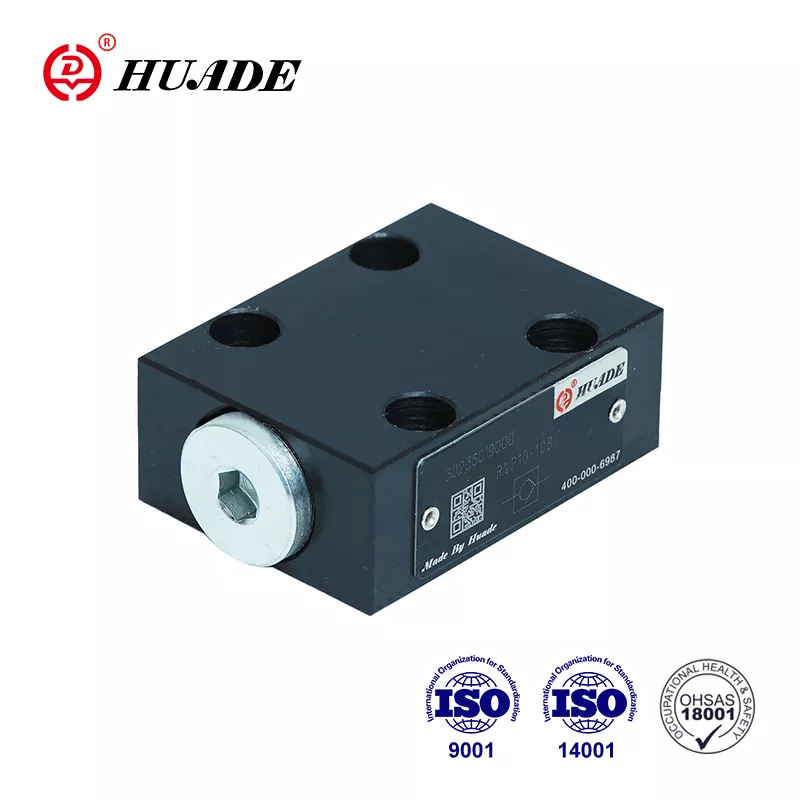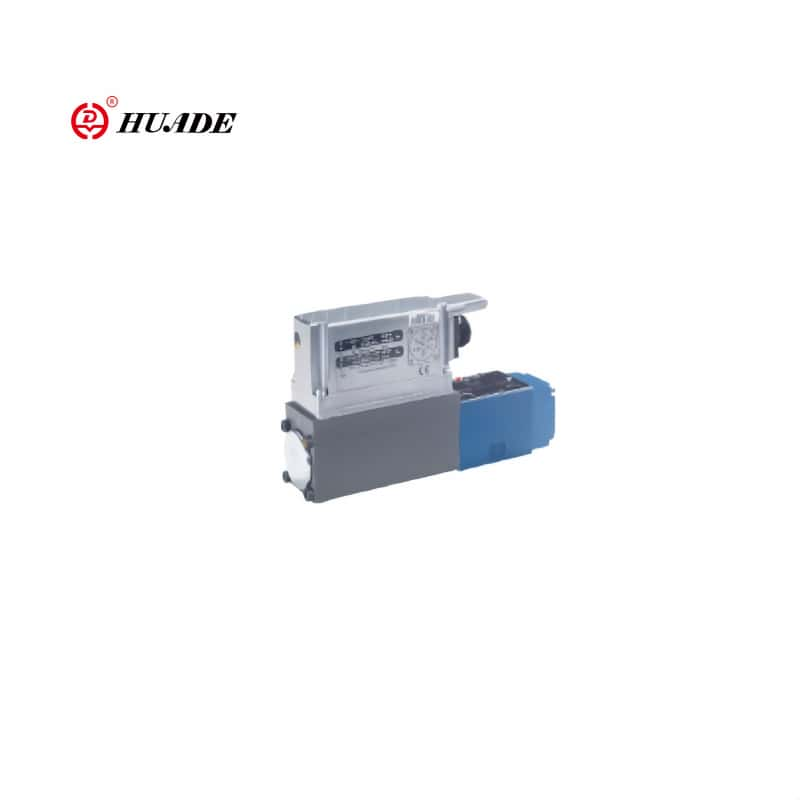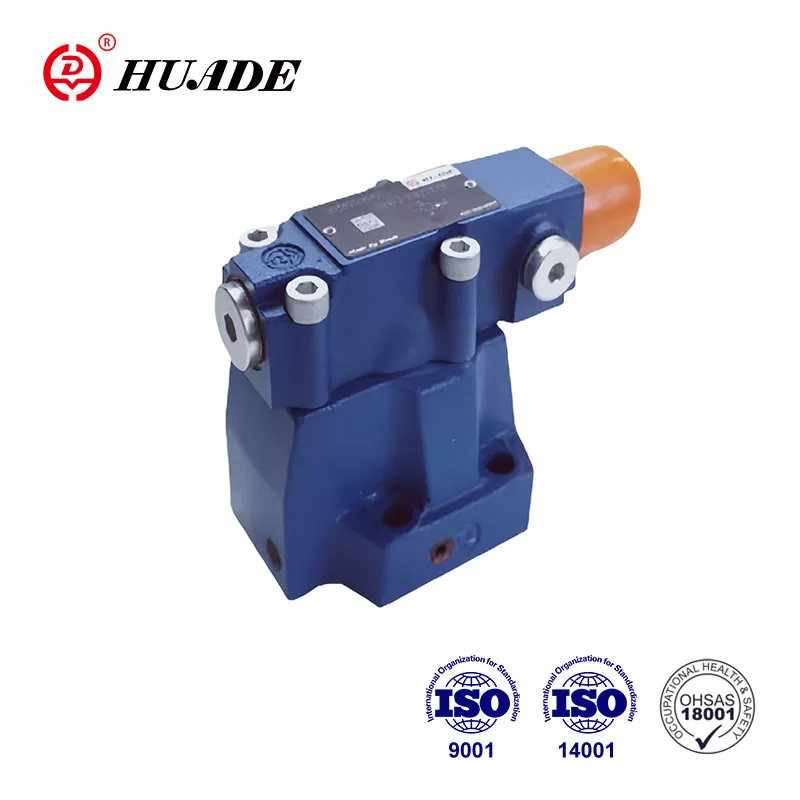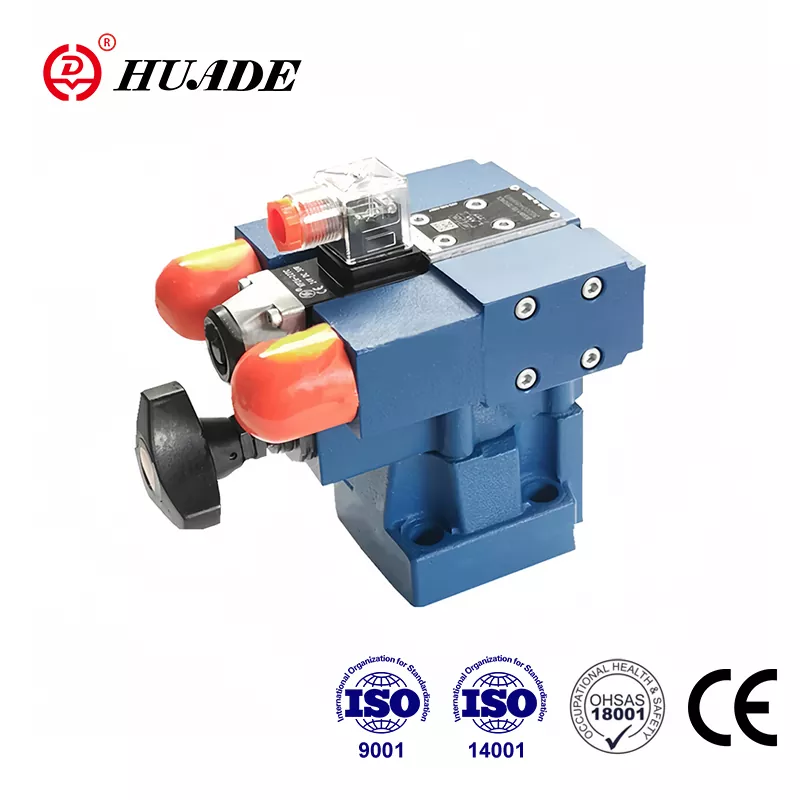When it comes to hydraulic systems that need absolute reliability, the poppet directional valve M-SEW 6 from Bosch Rexroth stands out as a serious contender. This valve solves a problem that traditional spool valves simply can't handle: complete leak-free isolation under high pressure. If you're working with hydraulic systems where even tiny leaks matter, understanding what makes the M-SEW 6 different could save you significant headaches down the road.
What Makes a Poppet Valve Different
The poppet directional valve M-SEW 6 uses a fundamentally different approach than most hydraulic valves you might encounter. Instead of sliding metal parts that create seals through tight tolerances, this valve uses a hardened ball or cone that physically blocks flow by seating against a precisely machined surface. Think of it like a bottle cap versus a sliding door. The bottle cap creates a complete seal when pressed down, while a sliding door always has some gap, no matter how tight the fit.
This design choice matters tremendously in real applications. Traditional spool valves always leak internally to some degree. The tighter the tolerances, the less they leak, but the leak never goes to zero. The M-SEW 6 poppet directional valve eliminates this problem entirely through its seat-based design. When the poppet element presses against its seat, flow stops completely.
Pressure Capabilities That Set It Apart
The M-SEW 6 poppet directional valve handles pressures up to 630 bar, which translates to roughly 9,150 psi. For context, most standard D03 size valves max out around 350 bar. This nearly doubled pressure rating isn't just a number on a datasheet. It represents a fundamental engineering commitment to structural integrity that affects everything from the housing thickness to the mounting requirements.
Operating at 630 bar creates enormous forces trying to separate the valve from its mounting surface. A typical D03 valve connection area experiences over 4,000 pounds of separating force at this pressure. The M-SEW 6 poppet directional valve handles this through specific mounting requirements that must be followed precisely. The mounting surface needs flatness within 0.01mm per 100mm and a surface roughness of Rz 0.8. The mounting bolts, M5x45 grade 10.9, must be torqued to exactly 8.9 Nm.
How the M-SEW 6 Actually Works
The poppet directional valve M-SEW 6 operates through direct solenoid actuation. When you energize the coil, it generates magnetic force that pulls the poppet element off its seat, allowing flow. When de-energized, a return spring and system pressure slam the poppet back onto its seat, blocking flow instantly. This gives the M-SEW 6 poppet directional valve remarkably fast switching times, especially when closing.
The switching speeds tell an important story. When operating on pure 24V DC, the valve energizes in 25 to 40 milliseconds and de-energizes in just 10 to 15 milliseconds. That de-energize time is exceptionally fast compared to spool valves, which matters enormously in safety applications. If something goes wrong and you need to stop flow immediately, those extra milliseconds could be critical.
However, if you run the M-SEW 6 poppet directional valve on AC voltage through a rectifier, the performance changes significantly. The de-energize time increases to 35 to 55 milliseconds because the rectifier circuit has filtering capacitors that slow down the current decay in the coil. This three to four times slower response might be acceptable for some applications, but for emergency shutdown systems, the direct DC operation clearly provides better performance.
Configuration Options and What They Mean
The M-SEW 6 poppet directional valve comes in several functional configurations. The most common are the 3/2-way versions with symbols U and C. The U symbol represents normally open configuration where port P connects to port A when the valve is not energized. The C symbol represents normally closed where P to A is blocked when not energized. These 3/2 configurations are where poppet valves really shine because they can maintain perfect isolation with simple geometry.
The valve also comes in 4/2-way configurations with symbols D and Y, though these are somewhat less common. Creating a 4/2 function with poppet elements is mechanically more complex because you need to maintain leak-free isolation at multiple ports simultaneously. The design trade-offs become more challenging, which is why Rexroth emphasizes the 3/2 versions where the poppet directional valve M-SEW 6 can deliver its maximum reliability and pressure capability.
Flow capacity maxes out at 25 liters per minute. This might seem low compared to some spool valves, but it's actually reasonable for a D03 size direct-operated poppet valve. The solenoid has to overcome both the spring force and the pressure force acting on the poppet element. Increasing flow capacity would require a larger poppet area, which would demand an impractically large solenoid for direct operation.
Ordering Code Structure Explained
The M-SEW 6 poppet directional valve uses a 16-position ordering code that specifies every technical detail. Understanding this code helps you get exactly the valve you need. Position 01 specifies the fluid type, which is M for mineral oil. Position 02 indicates whether it's a 2-way, 3-way, or 4-way valve. Position 03 is SEW, confirming it's a poppet style direct-operated valve.
Position 04 confirms the size as 6, which corresponds to the NG6 or D03 standard. Position 05 is your symbol selection like U or C. Position 07 specifies the pressure rating, either 420 or 630 bar. Position 09 handles voltage, with G24 being standard 24V DC. Options like G96 and G110 indicate operation on 110V or 120V AC through rectification.
Position 12 becomes important if you need position monitoring. The M-SEW 6 poppet directional valve can be equipped with inductive sensors (QMAG24 or QMBG24) that confirm the valve's actual position. However, these monitoring options only work with the 420 bar version. The thicker housing required for 630 bar operation doesn't leave room for the standard sensor mounting arrangement.
Position 13 lets you add throttle or check valve inserts. The throttle inserts, designated B12 through B22, restrict flow to different degrees. When you're operating the poppet directional valve M-SEW 6 at maximum pressure and flow, these inserts can prevent water hammer and cavitation during switching. Position 14 specifies seal material, either standard NBR or FKM (designated by V suffix) for compatibility with special fluids.
Fluid Compatibility Considerations
The M-SEW 6 poppet directional valve works with standard mineral oils meeting DIN 51524 specifications. It also handles various biodegradable and fire-resistant fluids including HEES, HEPG, HETG, HFDR, and HFDU types. The seal material choice becomes critical here. Standard NBR seals work fine with mineral oil and operate from -30°C to +80°C. If you're using certain synthetic esters or polyglycol fluids, you must specify FKM seals with the V suffix. FKM seals have a slightly narrower temperature range of -20°C to +80°C but provide necessary chemical resistance.
Getting the seal selection wrong causes rapid degradation. NBR seals will swell and fail in certain synthetic fluids, while FKM seals may harden and crack if used outside their temperature range. The poppet directional valve M-SEW 6 documentation clearly specifies which seal works with which fluid, and following these guidelines strictly is not optional.
Installation Requirements You Cannot Ignore
Mounting the M-SEW 6 poppet directional valve correctly determines whether it performs as designed or leaks under pressure. The valve mounts to a D03/NG6 manifold or subplate using four M5x45 bolts. These bolts must be grade 10.9 strength and torqued to precisely 8.9 Nm. Under-torquing allows the housing to separate from the mounting surface under pressure. Over-torquing can warp the mounting surface, creating stress concentrations that lead to seal failure.
The O-rings at the ports matter too. Port P uses a 10x2mm O-ring while ports A and B use 9.25x1.78mm O-rings. These aren't arbitrary sizes. They're matched to the groove dimensions and expected pressure loads. Using wrong O-rings or damaged O-rings guarantees leakage that defeats the entire purpose of choosing a poppet directional valve M-SEW 6 in the first place.
The solenoid coil attaches with a lock nut torqued to 4 Nm. This might seem less critical than the main mounting bolts, but loose solenoid mounting causes alignment problems that increase the magnetic gap, reducing force and potentially preventing full poppet travel. The valve might appear to work but not fully open or close, causing flow restrictions or incomplete sealing.
Maintenance Advantages Built Into Design
One clever aspect of the M-SEW 6 poppet directional valve is the removable and rotatable coil design. The solenoid coil can be removed and replaced without disturbing the pressure-containing hydraulic housing. This means you can do electrical maintenance without depressurizing the entire hydraulic system. In high-pressure systems, depressurization and re-pressurization is time-consuming and potentially risky. Being able to swap a failed coil without touching the hydraulic circuit reduces downtime significantly.
The coil rotates 90 degrees, which helps with cable routing in tight manifold blocks. You can orient the electrical connection to avoid interference with adjacent components. This flexibility makes the poppet directional valve M-SEW 6 easier to integrate into complex assemblies where space is limited.
The poppet design itself requires less maintenance than spool valves. There are no precisely machined sliding surfaces that gradually wear and increase leakage. The poppet either seals or it doesn't. As long as contamination doesn't damage the seating surfaces, the valve maintains its zero-leak performance essentially indefinitely.
Where This Valve Makes Most Sense
The poppet directional valve M-SEW 6 excels in applications where loads must be held without drift for extended periods. Hydraulic clamping systems in machine tools represent a perfect use case. Once the clamp closes on a workpiece, it needs to stay clamped with zero pressure loss during machining. Even a tiny leak would allow the clamp to slowly release, potentially causing the workpiece to shift during cutting operations.
Accumulator isolation is another natural fit. When you charge an accumulator and then need to isolate it from the rest of the circuit, a leaking isolation valve gradually bleeds pressure out of the accumulator. The M-SEW 6 poppet directional valve maintains that pressure indefinitely. Safety circuits also benefit tremendously. If a safety system depends on preventing flow when de-energized, internal leakage through a spool valve could allow unintended motion even when the control signal is off.
Testing systems that need to hold pressure for leak detection require zero-leak isolation valves. High-pressure forming and forging presses operate at pressures where the M-SEW 6's 630 bar rating becomes valuable. Subsea hydraulic systems face both high pressure and severe reliability requirements where the poppet directional valve M-SEW 6's leak-free design provides critical safety margins.
Comparing Against Competitive Options
Parker Hannifin's D1SE series represents the closest direct competition to the M-SEW 6 poppet directional valve in the D03 size range. The D1SE handles pressures up to 350 bar and flows up to 20 liters per minute. It uses a similar poppet design philosophy with cone-type seating elements. The switching times are slower, around 50ms for energization and 60ms for de-energization on DC operation.
The pressure difference between 350 bar and 630 bar reveals different market strategies. Parker aims the D1SE at the broader market of applications that need leak-free isolation at normal industrial pressures. Rexroth positions the M-SEW 6 poppet directional valve for the premium segment where extreme pressure capability justifies higher cost. Applications that truly need 630 bar capability have limited alternatives, giving Rexroth a strong position in that niche.
The faster switching times of the M-SEW 6, particularly the 10-15ms de-energize time, provide a tangible safety advantage in emergency shutdown scenarios. That 45ms difference between the M-SEW 6 and D1SE might determine whether a machine stops before causing damage or injury. For safety-critical applications, faster response times aren't just nice features, they're essential requirements.
Understanding the Trade-offs
Choosing a poppet directional valve M-SEW 6 means accepting certain limitations. The 25 liter per minute flow capacity won't satisfy applications needing high flow rates. The pressure imbalance inherent in poppet design means the solenoid works harder to open the valve against system pressure. Direct-operated poppet valves reach practical limits around the flow and pressure ranges the M-SEW 6 achieves. Going significantly larger would require pilot operation, which adds complexity and cost.
The mounting precision requirements are stricter than typical spool valves. You cannot bolt the M-SEW 6 poppet directional valve onto a rough-machined surface and expect it to seal at 630 bar. The manifold or subplate needs proper machining to meet the flatness and finish specifications. This adds cost to the overall system but delivers the zero-leak performance that justifies choosing a poppet valve in the first place.
The position monitoring limitation on the 630 bar version matters in applications requiring functional safety verification. If your safety analysis determines you need position feedback to prove the valve closed, you must accept the 420 bar pressure limit. This represents a fundamental engineering trade-off where Rexroth chose not to compromise the structural integrity needed for 630 bar in order to accommodate sensors.
Making the Right Choice for Your Application
If your application absolutely requires zero internal leakage, the poppet directional valve M-SEW 6 belongs on your shortlist. If you need to hold pressure above 400 bar, your options narrow considerably and the M-SEW 6 becomes one of the few viable choices in the D03 size. If fast de-energize response matters for safety, the 10-15ms switching time provides real advantages. If you work with biodegradable or fire-resistant fluids, the FKM seal option handles compatibility that some competitive valves don't offer.
Conversely, if you need high flow rates above 30 liters per minute, the M-SEW 6 poppet directional valve won't work. If your application involves frequent cycling at maximum flow and pressure, you should carefully evaluate whether the valve stays within its performance limits or whether you need throttle inserts to manage the conditions. If you need 4/2 functionality with complex switching requirements, a spool valve might actually be simpler despite its leakage characteristics.
The total cost of ownership calculation favors the M-SEW 6 poppet directional valve in applications where downtime is expensive. The long service life, minimal wear, and easy coil replacement reduce maintenance costs and system downtime. The initial purchase price runs higher than standard spool valves, but in critical applications where reliability matters, that premium cost gets amortized quickly.
Technical Documentation and Support
Bosch Rexroth provides comprehensive technical documentation for the M-SEW 6 poppet directional valve including CAD models in multiple formats, full dimensional drawings, and detailed performance curves. The documentation clearly specifies all installation requirements, O-ring specifications, torque values, and fluid compatibility information. Following these specifications exactly is critical for achieving the rated performance.
The valve conforms to ISO 4401-03-02-0-05 and DIN 24340 Form A mounting standards, ensuring compatibility with industry-standard manifolds and subplates. This standardization reduces integration risk and makes the M-SEW 6 poppet directional valve a straightforward replacement for other D03 valves when upgrading a system for better leak performance.
Final Considerations
The Bosch Rexroth M-SEW 6 poppet directional valve represents a specialized solution for demanding applications. It doesn't try to be all things to all applications. Instead, it focuses on doing one job exceptionally well: providing leak-free isolation at pressures up to 630 bar in a standardized D03 package. The engineering that makes this possible requires attention to detail during installation and application, but delivers performance that conventional spool valves simply cannot match.
For engineers working on load-holding circuits, safety systems, or high-pressure applications, understanding what the M-SEW 6 poppet directional valve offers helps make informed component selections. The valve's capabilities align with specific requirements where its strengths matter most. Choosing it for the right application delivers reliable, leak-free performance that justifies its premium positioning in the market.
